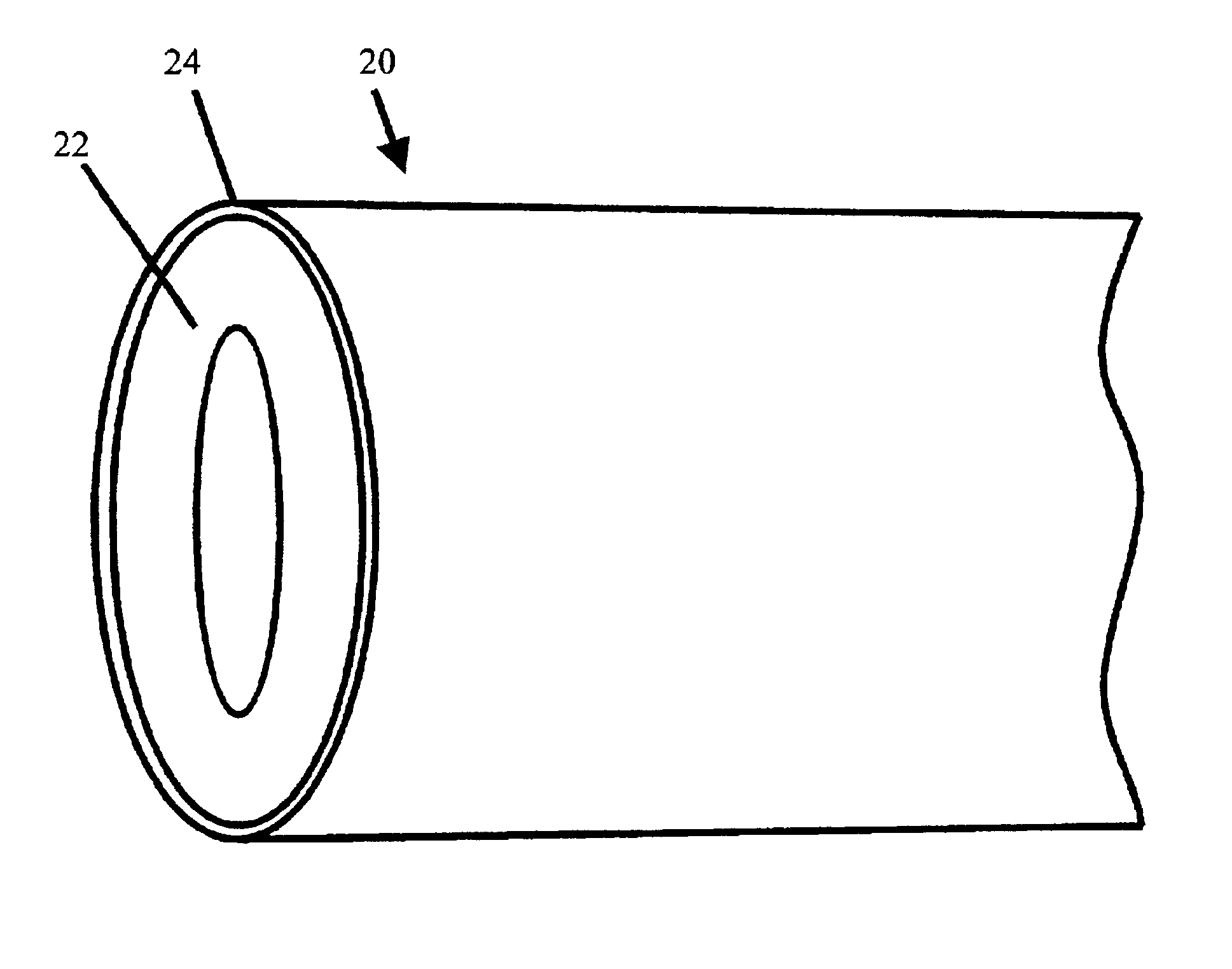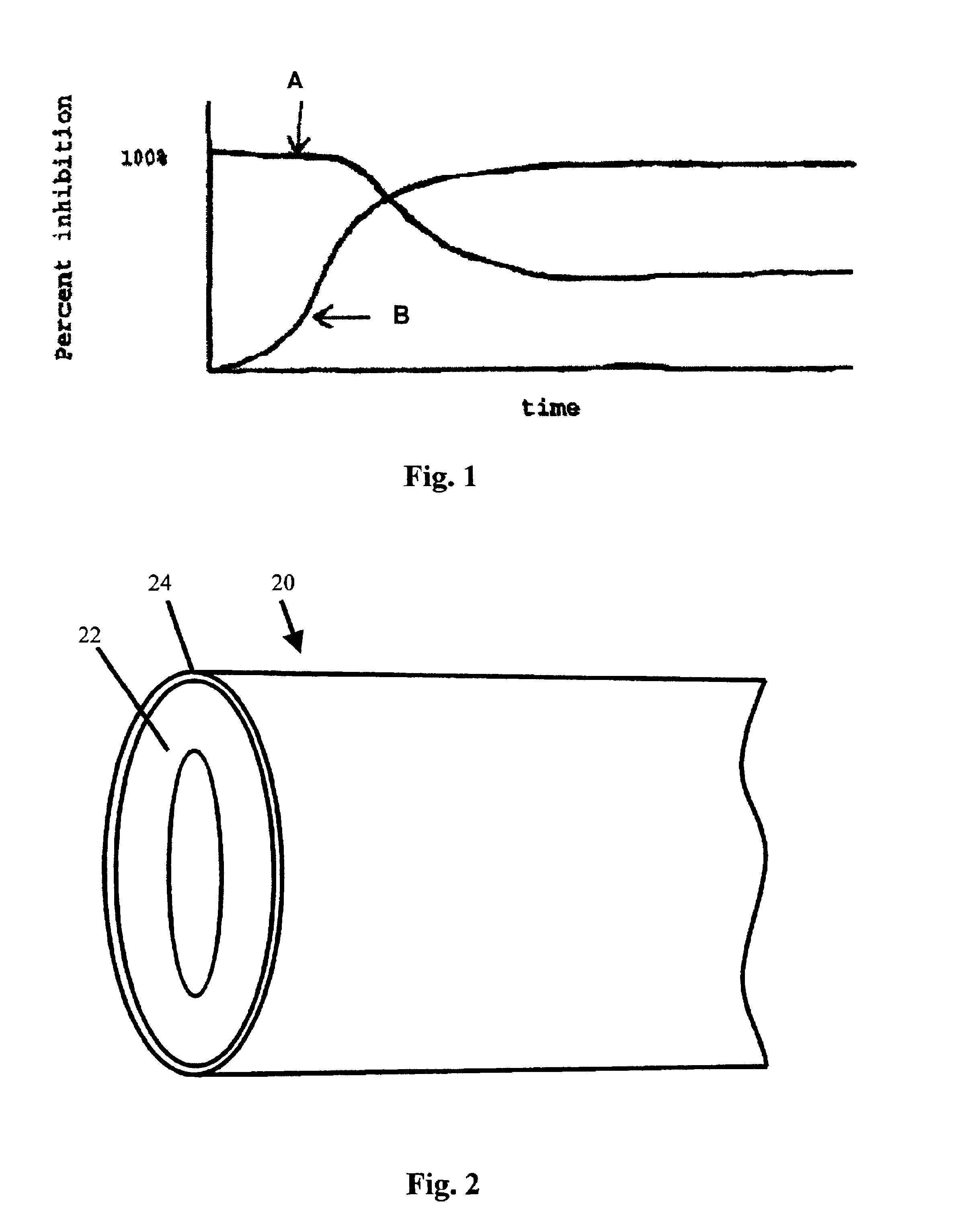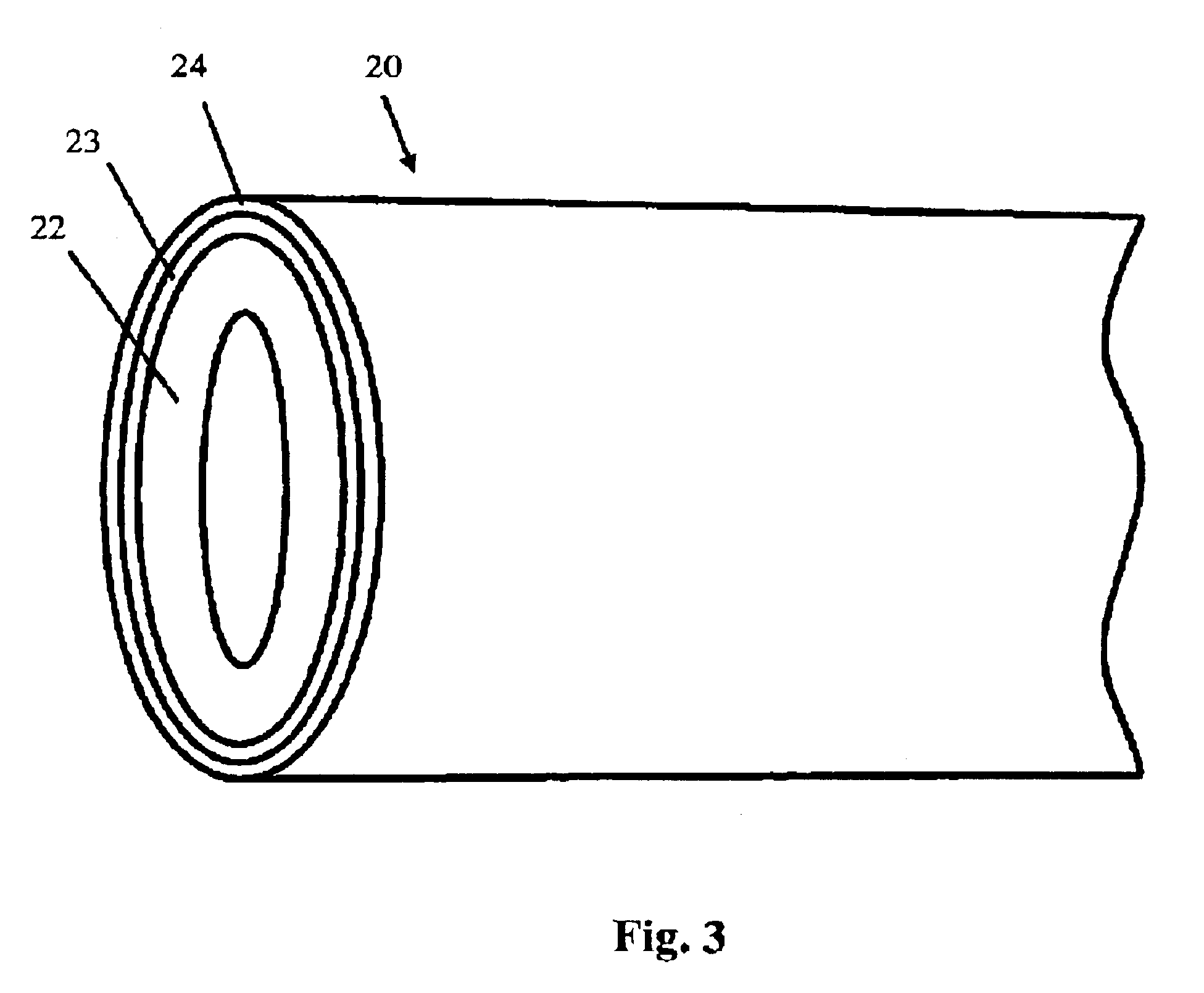Long-term indwelling medical devices containing slow-releasing antimicrobial agents and having a surfactant surface
a technology of antimicrobial agents and medical devices, which is applied in the direction of prosthesis, catheters, wound drains, etc., can solve the problems of ineffective efforts to significantly prolong the half-life of indwelling stents, urine alkalinization in the vicinity of devices, and formation of deposits on the device surface, etc., to achieve the effect of reducing the formation of biofilms and encrusting over long periods of time, simple design and simple production
- Summary
- Abstract
- Description
- Claims
- Application Information
AI Technical Summary
Benefits of technology
Problems solved by technology
Method used
Image
Examples
Embodiment Construction
[0021]In accordance with an embodiment of the present invention, a dual approach is used to provide an implantable medical device having long-term bacterial clearance. In accordance with one approach, the surface properties of the device are modified through the use of a surfactant. In accordance with the other approach, antimicrobial agents are released from the device in a slow-release fashion upon implantation.
[0022]FIG. 1 illustrates the general patterns of bacterial adhesion inhibition that is due to each of the above approaches. The pattern of bacterial adhesion inhibition that is due to the modification of the device surface with a surfactant is illustrated in curve “A” of FIG. 1. As can be seen from this curve, at the outset, the surfactant-modified surface resists adherence of living bacteria (as well as dead bacteria and host protein) to a high degree. However, due to degradation of the surfactant, the efficacy associated with the surfactant-modified surface eventually dec...
PUM
| Property | Measurement | Unit |
|---|---|---|
| Time | aaaaa | aaaaa |
| Time | aaaaa | aaaaa |
| Hydrophilicity | aaaaa | aaaaa |
Abstract
Description
Claims
Application Information
 Login to View More
Login to View More - R&D
- Intellectual Property
- Life Sciences
- Materials
- Tech Scout
- Unparalleled Data Quality
- Higher Quality Content
- 60% Fewer Hallucinations
Browse by: Latest US Patents, China's latest patents, Technical Efficacy Thesaurus, Application Domain, Technology Topic, Popular Technical Reports.
© 2025 PatSnap. All rights reserved.Legal|Privacy policy|Modern Slavery Act Transparency Statement|Sitemap|About US| Contact US: help@patsnap.com



